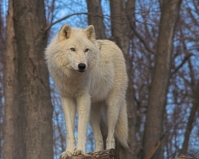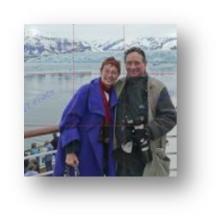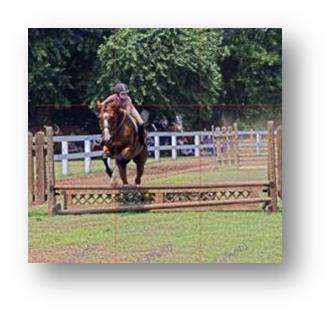Improve Your Photos — Use Selective Focus
Not everything in your photo needs to be in sharp focus. Your photo can be much more interesting if the main subject is in sharp focus and the rest of the photo is slightly or greatly out of focus.

Main subject in sharp focus, background is slightly out of focus.
Look at the photo on the left. The main subject, the wolf, is in very sharp focus and the background is slightly out of focus. You can see the hairs on the wolf’s coat and, especially at normal size, can see the intensity in his eyes. Your eyes are naturally drawn to the wolf’s eyes.

Main subject in sharp focus, background very out of focus
The photo on the right uses selective focus to place the main subject in sharp focus and the background is very out of focus. Selective focus keeps your focus on the seagull (for better or worse) but you can still tell that the seagull is on a post at a place where there are boats.
How to you get selective focus? The longer the focal length of the lens (200 mm vs 50 mm) and the wider the aperture setting (f-4 vs. f-14) the smaller narrower the field of focus will be. By combining different lenses and aperture settings you have many choices of how you want your photo to look. This means that you have to take your camera off of full automatic and use either the aperture priority or manual mode.
In the photo of the wolf I used a long 280 mm lens from a long distance and chose a relatively small aperture of f-14. By focusing on the eyes of the wolf, I was able to keep the whole wolf in sharp focus and the trees in the background in relatively soft focus. If I used a wide aperture, it’s possible that the hind quarter of the wolf would also be in soft focus and the picture would be ruined. If I chose a smaller aperture, say f-22, the trees in the background would be in sharper focus and the photo would lose its center of interest. If I used a short lens and got real close to the wolf, I may not be here now to write this.
In the photo of the seagull I used a shorter lens but a wide aperture. The purpose of the photo was to to make the seagull the center of interest. If I used a smaller aperture, more of the backgroud would be in focus. It would be a much different photo. The choice I made was dictated by the photo I wanted.
Choose how your photos will look. Turn off the fully automatic settings and create your masterpiece.
Please tell me what you think or ask a question by leaving on comment.
See more of my photos at the ET-Photography website.


